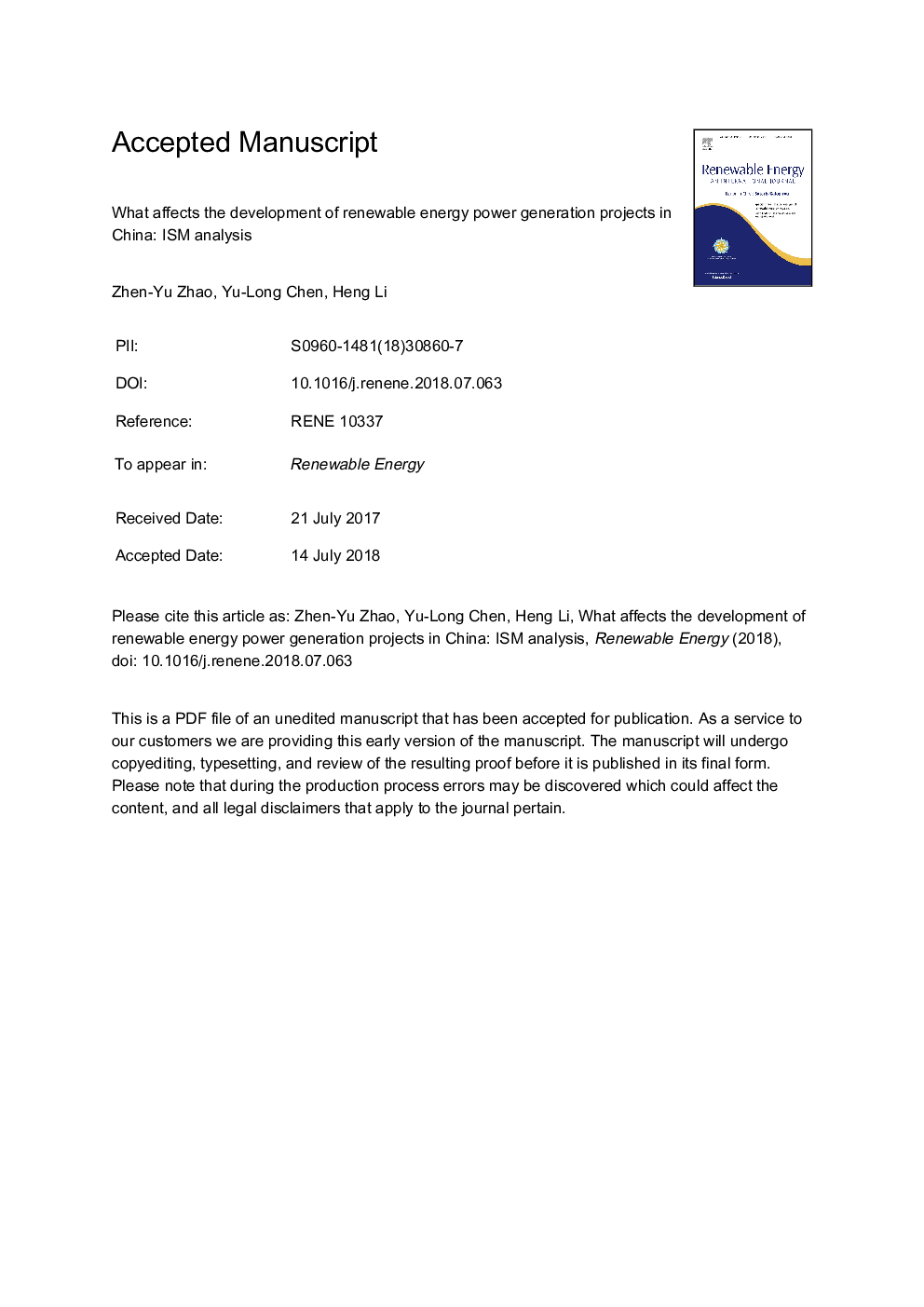| Article ID | Journal | Published Year | Pages | File Type |
|---|---|---|---|---|
| 6763655 | Renewable Energy | 2019 | 44 Pages |
Abstract
Developing renewable energy power generation projects (REPGPs) is significant to promote energy and environment sustainability. This study explores the inter-relationship amongst representative factors (RFs) affecting the development of REPGPs in China. Through literature survey, 43 factors affecting the development of REPGPs are identified. A questionnaire survey, targeting practitioners involved in the renewable energy (RE) industry is conducted for the relative importance of these factors. The survey data were processed by principal component analysis, and as a result, 16 RFs are obtained. Interpretive Structural Modeling (ISM) is adopted to establish a hierarchy structure to illustrate the intricate interrelationships among the RFs. They are classified into four clusters, i.e. autonomous factors, dependent factors, linkage factors, and driving factors by applying the Matrice d'Impacts croises-multipication appliqué a classement (MICMAC) technique to demonstrate their driving force and dependence power for REPGPs. Distribution of the RFs in the ISM and the driving force and dependence power diagram found that economy and urbanization development, incentive policy system, and government policy implementation are three most important factors. The results help both project developers and policy makers to understand the impact of forces on the development of REPGPs, resulting in better investment decisions and more targeted policies.
Related Topics
Physical Sciences and Engineering
Energy
Renewable Energy, Sustainability and the Environment
Authors
Zhen-Yu Zhao, Yu-Long Chen, Heng Li,
